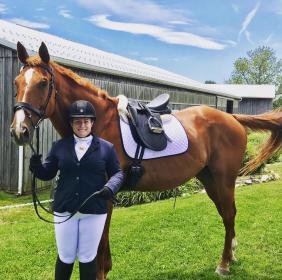I’m so excited to be entering my first recognized dressage show. I feel like I’ve joined every horse organization on the planet, paid a million membership fees for me and my horse, did Safe Sport training and finally clicked “submit” on Equestrian Entries !
I have a “real dressage” trainer I just started working with but I don’t want to ask a million stupid questions so I’m trying to do as much research as I can. I realized at my schooling show this weekend I had no idea which side of the bridle my numbers goes on… so there’s that. face palm
What are your tips and tricks for showing? What did you wish you knew before your first show? How can I make this as enjoyable for me and my horse? (he’s a school master so thankfully the riding part is the least of my worries! and I just want to learn and grow not win).
Do I have to clip his ears and muzzle? He lives at home and is outside almost 24/7
Also… I have to ask… how do I keep my white breeches clean until I ride, I put sweat pants over them this weekend but what if it’s crazy hot? … can you tell how out of my league I am! I just added a photo from our "dress rehearsal " this past weekend.


